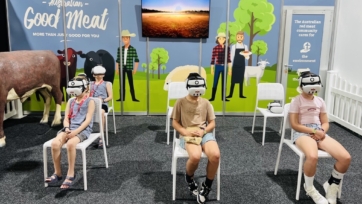Sports for Life: Why PE lessons are not just about exercise
Sports For Life: Why PE Lessons are not just about exercise
Glance at the Australian Curriculum for Health and Physical Education (HPE), and it becomes abundantly clear that this core learning area encompasses many important skills for living a safe, healthy, and active life. Gone are the days where HPE lessons simply involved completing physical exercise; like the dreaded Beep Test! Instead, school students across Australia are offered a curriculum that not only promotes lifelong physical activity, but just as importantly, a curriculum that supports their mental health and wellbeing. So how can you better understand this, and amplify the deeper meaning within the HPE curriculum in your resources?
What is HPE and why is it important?
- The Health and Physical Education (HPE) curriculum places equal value on two strands: Movement and Physical Activity and Personal, Social and Community Health
- While exercise certainly plays an important role, HPE as a key learning area explores a far wider range of topics and skills needed to thrive as healthy, safe and active human-beings.
- The world is rapidly changing, and the importance of learning how to deal with these changes has never been greater. Particularly in today’s climate, with the uncertainty and complexity of living life alongside COVID, it is critical for young Australian’s to be given the skills to cope in a positive and healthy way.
- As we become increasingly focused on digital technologies and social media, Generation Alphas (born after 2010) are frequently exposed to content that can be both inspiring and harmful. Their safety, relationships, mental health, and self-identities are being challenged in ways that have never been seen before.
- Adding to this, technology is having an impact on our physical health, with sedentary lifestyles becoming more prevalent. Developing good attitudes towards lifelong physical activity is crucial in setting up young Australians to achieve positive health outcomes in the future.
What does this mean for me?
- Ideally, sports programs and educational resources should place equal emphasis on both sides of the HPE coin: Physical Activity, and Personal, Social and Community Health. Where possible, aim to present programs that incorporate physical movement in various settings, as well as theory-based lessons. The challenge lies in ensuring students remain active participants in both contexts!
- Teaching fundamental movement skills and promoting physically active lifestyles is of great importance. Currently, with at-home learning and the rise of digital technology, there is a critical need for consistent, engaging, and creative programs to get students out of their seats! Zoom training sessions, app-based scavenger hunts, and vide challenges/competitions have proved popular avenues of late.
- Likewise, it is vital to incorporate focus areas such as mental health and wellbeing, resilience, identities, relationships, and cyber safety. As some of these topics can be quite sensitive and ‘heavy’, facilitating student-led lessons is a valuable way to remain relevant, authentic, and respectful.
So, if you have ever thought of Health and Physical Education as essentially being about running, jumping, throwing, and catching, it might be time to have a read of the current Australian HPE Curriculum. It is detailed, diverse, and is fundamental in preparing young Australians for a long and healthy life.
Next steps?
- Audit your existing resources and consider how to incorporate both strands of the Health and Physical Education curriculum.
- Understand that HPE is just as much about mental health and wellbeing, as it is about physical activity.
- Update your existing resources or create new resources that deliver opportunities to improve both the physical and mental wellbeing of students.
Don’t have the time or expertise? Contact Kimberlin Education and let us help you ensure your resources are engaging, meaningful and beneficial for all young Australians!




